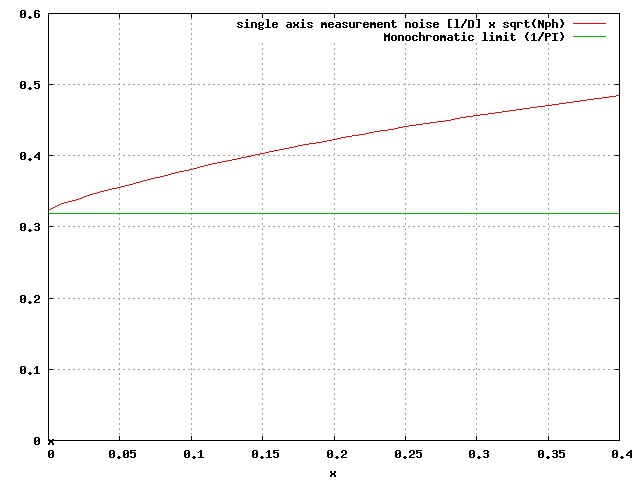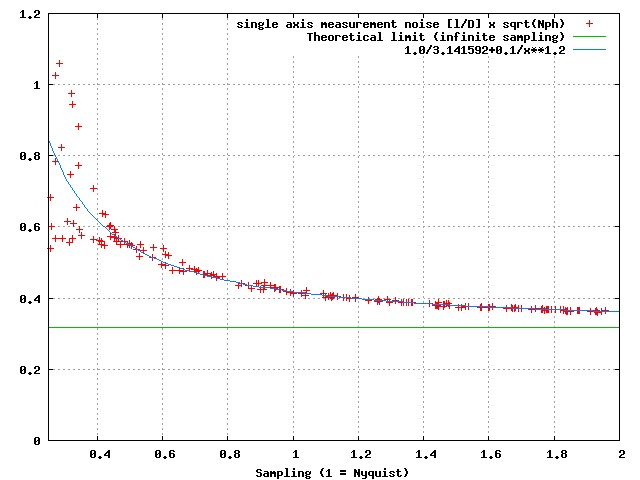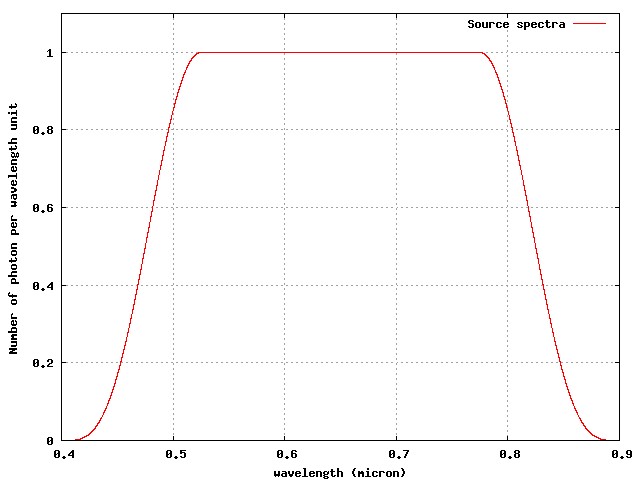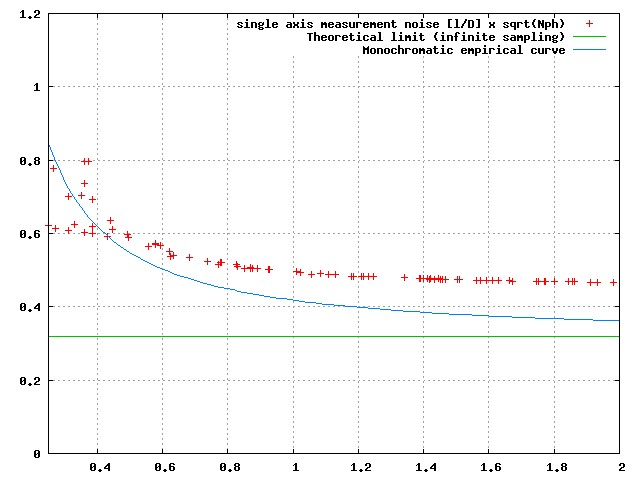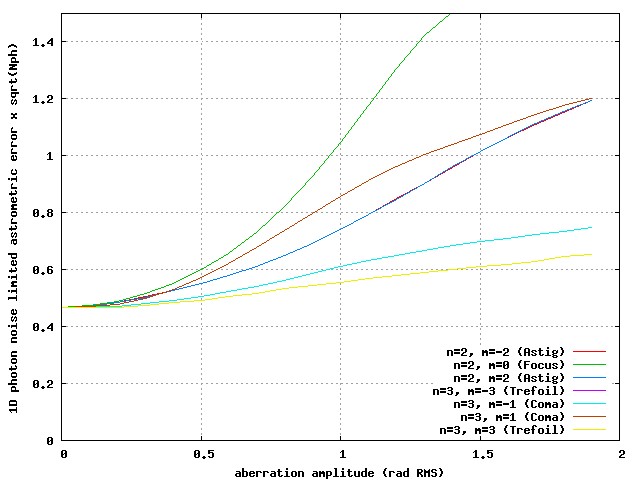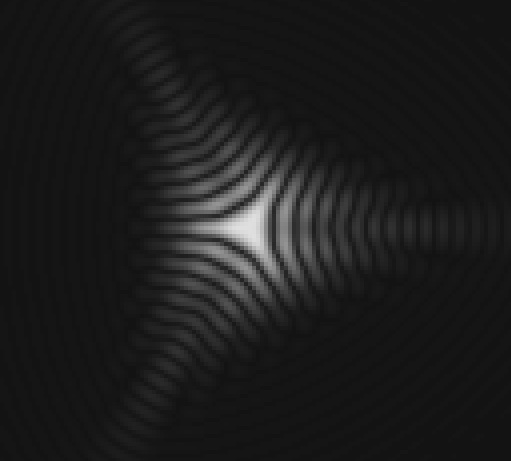
Monochromatic PSF (top left), x = 0.1 (top right, approximately 20% wide spectral band), x = 0.2 (bottom left, approximately 40% wide spectral band) and x = 0.4 (bottom left, approximately 80% spectral band). In each case, the spectra is flat in dlambda, and extends from lambda0/(1+x) to lambda0*(1+x). The sampling is 10x Nyquist at the central wavelength.
